If you ever wanted to feel the spirit of Sofia that bears the marks of different historical eras and shows how various cultures that existed on these lands interacted and intertwined, you would pay a visit to the historical center of the city. After the traditional taking of photos in front of the Presidency during changing of guards, one can turn around and take a look at a beautiful ancient building with a sign that reads Archaeological Museum. Most people, including many citizens of Sofia, do not actually know that this building used to be a mosque. We learned more about it from Doctor Kamen Boyadzhiev from the National Archaeological Institute at the Bulgarian Academy of Sciences:
“This mosque, known as Buyuk (Grand) mosque was built in the 15th century. This is one of the oldest preserved buildings in today’s Sofia. It was built under the initiative of Mahmud Pasha, a great vizier of sultan Mehmed II the Conqueror (1451-1478). Building the mosque took more than 40 years. It was finished in 1494 after the death of Mahmud Pasha.”
Mahmud Pasha was born in Krushevats, Serbia, at the beginning of the 15th century. His mother was a Serbian aristocrat. His father was a descendant of the dynasty of the Angels, the last Christian kings of Thessaly. As a boy he fell in Turkish captivity and grew up in the court of sultan Murad II in Edirne, where he received solid education.
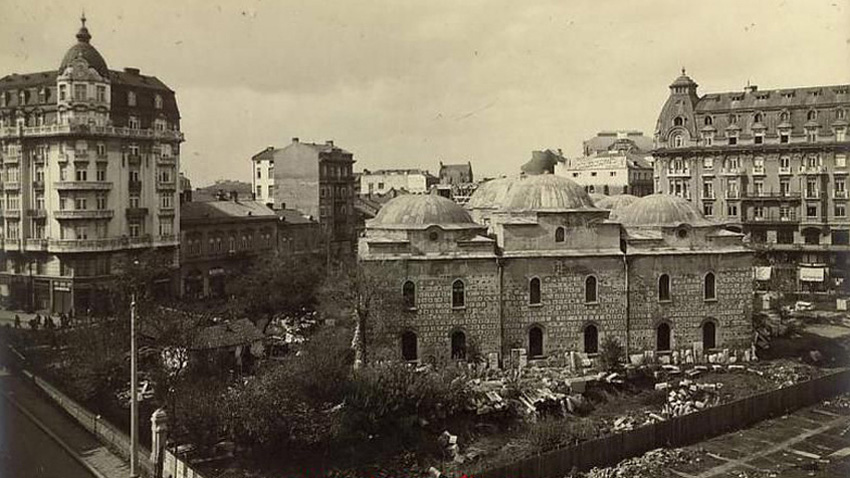
“After its completion until the 19th century Buyuk mosque was one of the most important buildings in the city. Sometimes military leaders gathered here before campaigns. The temple existed in its original form until 19th century when two successive earthquakes caused damage to the building. During one of the earthquakes the minaret was destroyed. The Ottomans took that for a sign and people stopped visiting the mosque and abandoned it,” Doctor Boyadzhiev says and adds that during the Liberation War (1877-1878) the abandoned mosque was used as an army hospital.
After the war, because of its central location and large area, the building was used temporarily for the preservation of cultural treasures. In 1892, with a decree by Knyaz Ferdinand, it was officially handed over to the new National Museum. During US bombing raids over Sofia in 1944 the building suffered considerable damage - parts of it were destroyed, as well as part of the archives and documentation stored.
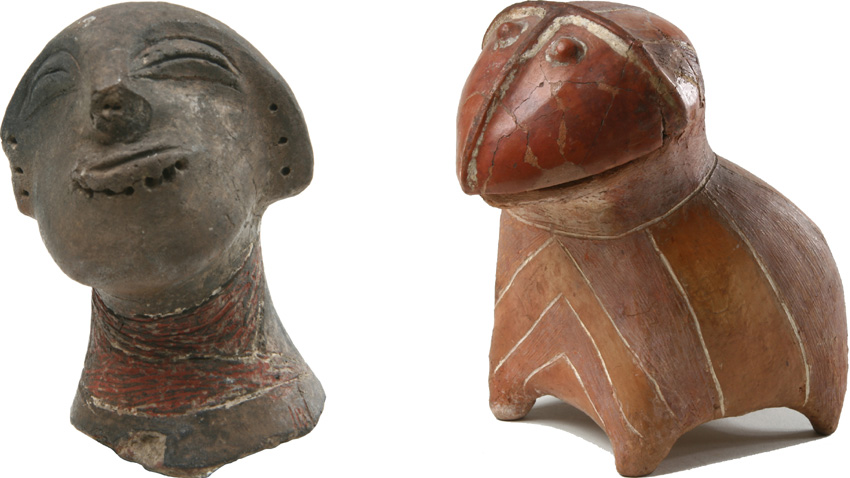
Rich history is not only to be found in the museum's collection but also in its foundations. In 1905, in connection with the official opening of the National Museum, partial reconstructions were made. A further enlargement was completed in the 1930s. At that time archaeological research was conducted in surrounding areas and ruins since the Early Iron Age or the 1st millennium BC were discovered, as well as later constructions related to Roman Serdika. The eastern gate of Serdika and the early Christian St. George rotunda are also situated close to the museum.
The exhibits kept in the Archaeological Museum have a high artistic and scientific-historical value. This is perhaps the archaeological museum with the richest collection in Balkans.
"Here are stored some of the earliest artefacts showing human presence in the Balkans and in Europe, dating back over a million and a half years ago. There are artefacts from the archaeological works in the Kozarnika Cave, from the late Middle Ages and the Islamic period, as well as the National Revival period,” Kamen Boyadzhiev says. “Among the most interesting objects on display in the museum is the famous golden Vulchitran treasure (below left), which dates to the end of the 2nd millennium or the end of the late Bronze Age, as well as other finds related to the development of the Thracian culture.
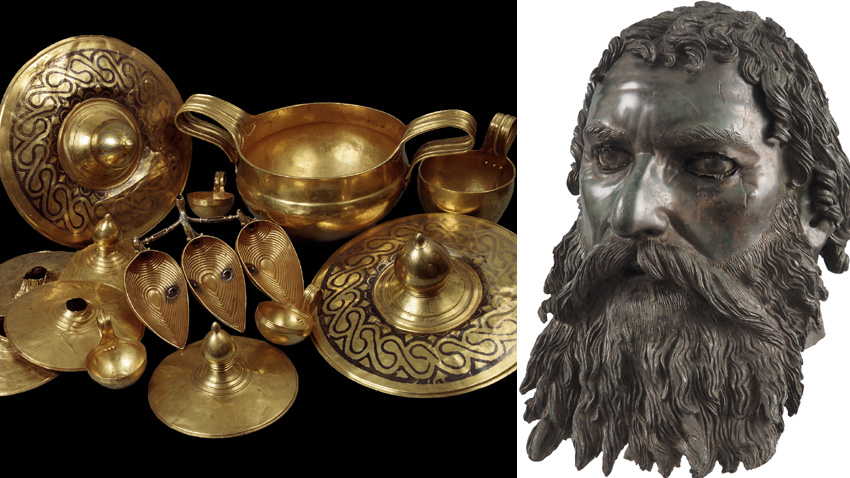
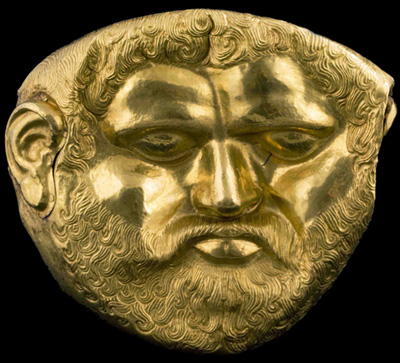 Among them is one of the masterpieces of antique sculpture - the bronze head of Seuthes III (above right) , discovered by Assoc. Prof. Georgi Kitov during his studies at the Golyama Kosmatka mound near Kazanluk. We cannot but mention the golden mask from the Svetitsata mound once again linked to an influential Thracian ruler as well as other examples of Thracian jewelry and toreutics. The prehistoric age collection of the museum is also rich and interesting as there are artifacts from the time of the New Stone Age and the Stone-Copper Age, or VI and V
Among them is one of the masterpieces of antique sculpture - the bronze head of Seuthes III (above right) , discovered by Assoc. Prof. Georgi Kitov during his studies at the Golyama Kosmatka mound near Kazanluk. We cannot but mention the golden mask from the Svetitsata mound once again linked to an influential Thracian ruler as well as other examples of Thracian jewelry and toreutics. The prehistoric age collection of the museum is also rich and interesting as there are artifacts from the time of the New Stone Age and the Stone-Copper Age, or VI and V 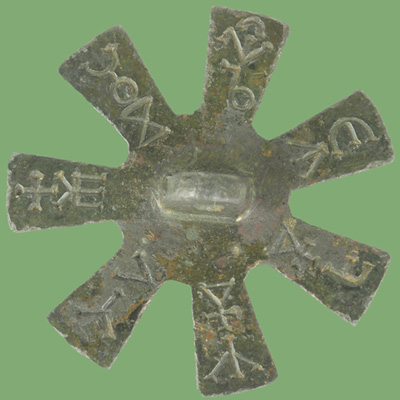 millennia BC, as well as monuments from the Roman era and Serdika (now Sofia), such as the bronze head of Apollo. Here visitors can see the famous Pliska rosette with runic signs, dating back to the early Bulgarian Middle Ages, as well as the ceramic icon of St. Theodore frm Veliki Preslav - 10th century, which was restored two years ago. But these are just some of the valuable things one can see. We have a rich collection that presents the millennial development in today's Bulgarian lands - the different cultures that interacted, developed here and left their traces to this day. "
millennia BC, as well as monuments from the Roman era and Serdika (now Sofia), such as the bronze head of Apollo. Here visitors can see the famous Pliska rosette with runic signs, dating back to the early Bulgarian Middle Ages, as well as the ceramic icon of St. Theodore frm Veliki Preslav - 10th century, which was restored two years ago. But these are just some of the valuable things one can see. We have a rich collection that presents the millennial development in today's Bulgarian lands - the different cultures that interacted, developed here and left their traces to this day. "
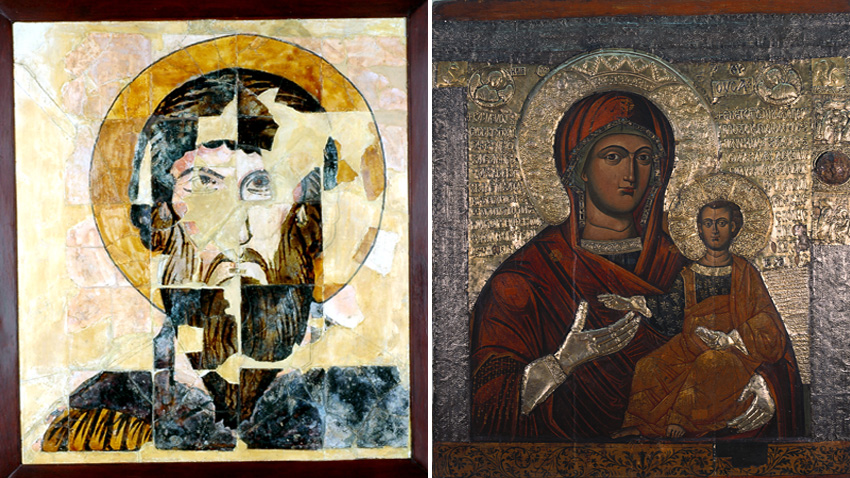
English: Alexander Markov
Photos: courtesy of the MuseumToday, 6 November, marks 104 years since the annexation of the Western Outlands in 1920. Traditionally Bulgarian territories in south-eastern Serbia and northern Macedonia were ceded to the Kingdom of Serbs, Croats and Slovenes in 1920 as a result of..
Volunteers joined the efforts to clean and restore the monastery St. Spas near Bakadzhik peak. The campaign is being organized on 2 November by Stoimen Petrov, mayor of the nearby village of Chargan, the Bulgarian news agency BTA reports. The..
There are three special days on the calendar of the Bulgarian Orthodox church, on which believers pray to God and give alms to honour the memory of their dear departed. The three All Souls’ Days always fall on the Saturdays before Meat..
The Patriarchal Cathedral of St Alexander Nevsky is celebrating its temple feast today. The cathedral, a symbol of the Bulgarian capital, was built "in..
On November 24, the Bulgarian Orthodox Church honors St. Catherine (Sveta Ekaterina in Bulgarian) , who was one of the most educated women of her time...

+359 2 9336 661
